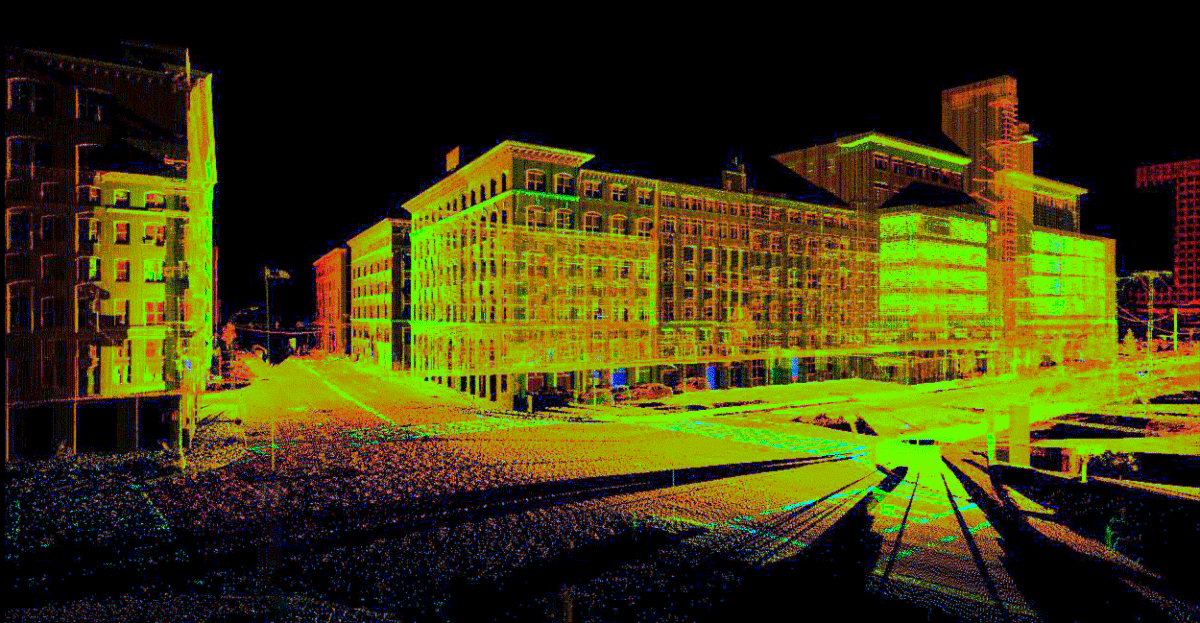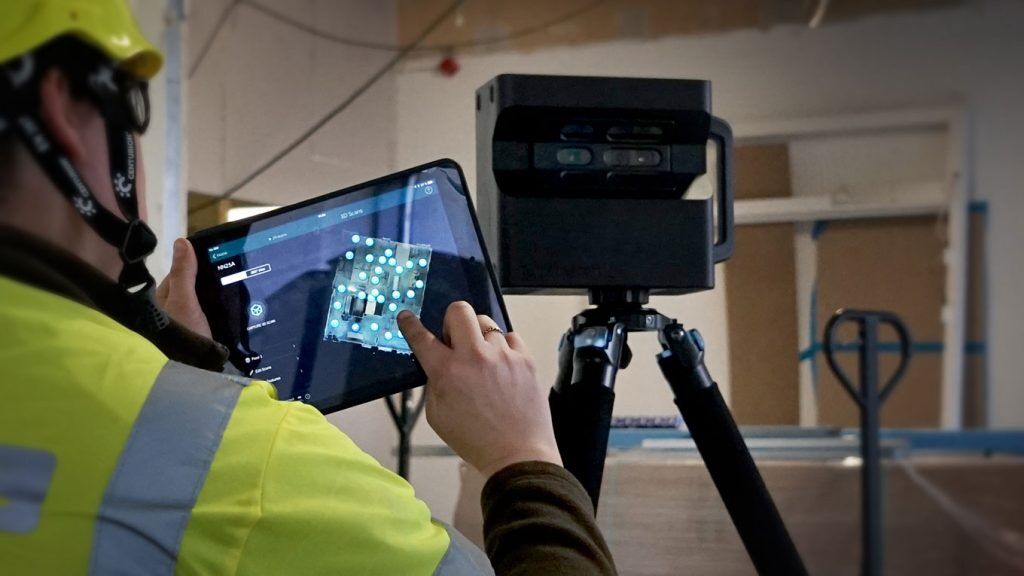Checking out the Applications of 3D Laser Scanning in Archaeology and Cultural Heritage Preservation
The integration of 3D laser scanning modern technology in archaeology and social heritage preservation marks a significant advancement in exactly how historical websites and artifacts are documented and analyzed. This non-invasive approach gives precise spatial information, disclosing detailed information that were formerly tough to catch. As the applications of this innovation remain to progress, various implications for documentation, conservation, and education and learning emerge, inviting further expedition right into its transformative effect on the field.
Recognizing 3D Laser Scanning Innovation
3D laser scanning innovation has revolutionized the area of archaeology by supplying thorough and exact spatial information. This sophisticated technology uses laser beam of lights to record countless data factors from an item or website, producing a very precise three-dimensional representation (3D Scanning). The resulting factor clouds can reveal detailed details of historical sites, structures, and artefacts that may be invisible to the naked eye
Using this innovation, archaeologists can record the exact dimensions, forms, and placements of objects with unprecedented accuracy. This method reduces the danger of human mistake and removes the demand for considerable manual measurements. Furthermore, the data accumulated can be analyzed and shared quickly, promoting partnership amongst researchers. By incorporating 3D laser scanning with GIS and other digital devices, excavators enhance their capability to picture and analyze historic contexts, resulting in deeper understandings right into old societies and atmospheres.
Enhancing Archaeological Paperwork
3D laser scanning substantially enhances archaeological documentation with its capability to produce precise site maps. This technology helps with comprehensive artifact analysis, giving insights that typical approaches may neglect. Additionally, it ensures the preservation of contextual data, which is crucial for recognizing the relationships within archaeological sites.
Exact Website Mapping
While conventional mapping techniques commonly struggle with capturing the complex details of archaeological sites, advanced laser scanning innovation provides a cutting edge technique to precise site mapping. This technique allows archaeologists to create highly described and specific three-dimensional representations of sites, showcasing topographical variations and architectural functions with amazing fidelity. The capability to capture numerous information factors in a matter of minutes enables complete paperwork, which can be quickly updated and shared among scientists. Additionally, laser scanning assists in the measurement of complicated geometries that would certainly be challenging to analyze using traditional tools. Because of this, this modern technology boosts the accuracy of website maps, adding significantly to the preservation and understanding of social heritage sources.
Comprehensive Artefact Analysis
Laser scanning modern technology considerably improves the evaluation of archaeological artefacts, offering scientists with unprecedented detail and accuracy. This method records intricate surface structures, dimensions, and features that standard documentation methods may forget. By producing high-resolution 3D versions, scholars can carefully analyze artifacts without the danger of damages intrinsic in physical handling. This precision permits much better relative studies, allowing experts to determine production methods, stylistic variants, and prospective social significance. The ability to adjust and picture data in three measurements assists in a deeper understanding of artifact functionality and usage. In general, laser scanning promotes a much more comprehensive method to archaeological paperwork, ensuring that crucial details about artefacts is maintained for future study and education and learning.
Conservation of Contextual Information
Maintaining contextual information is necessary for boosting historical paperwork, as it assures that searchings for are comprehended within their original environmental and cultural frameworks. 3D laser scanning technology greatly contributes to this preservation initiative by recording thorough spatial connections among artifacts, frameworks, and their settings. By producing exact 3D designs, excavators can record the exact places and orientations of things sitting, helping with a thorough understanding of their context. This innovation enables scientists to take another look at and evaluate sites long after excavation, keeping the honesty of contextual details. Furthermore, digital documents produced through scanning can be shared around the world, promoting joint research study and public engagement. Inevitably, maintaining contextual data via 3D laser scanning enhances archaeological narratives and advertises a more extensive recognition of cultural heritage.
Conservation of Cultural Heritage Sites
As developments in technology proceed to evolve, the conservation of cultural heritage websites has actually ended up being progressively dependent on ingenious approaches such as 3D laser scanning. This innovation permits the in-depth documents of artefacts, structures, and landscapes, catching their precise measurements and spatial connections in a non-invasive way. By developing high-resolution 3D models, scientists can check and examine wear and tear patterns, making it possible for proactive conservation methods.
In addition, 3D laser scanning helps with the sharing of thorough site data with the worldwide area, advertising collaboration among historians, preservationists, and archaeologists. These designs offer as indispensable sources for education and learning and public involvement, elevating recognition of cultural heritage problems. The digital records developed can guard against loss due to environmental elements, vandalism, or neglect. Generally, 3D laser scanning represents a transformative approach to the preservation of cultural heritage, guaranteeing that these sites can be studied and valued by future generations.

Restoration and Repair Initiatives
The comprehensive paperwork attained via 3D laser scanning plays a significant function in restoration and repair initiatives within archaeology. This innovation gives precise measurements and high-resolution images, permitting exact digital models of frameworks and artifacts. These designs act as vital recommendations throughout reconstruction procedures, allowing excavators to picture the original style and make informed decisions regarding products and strategies needed for fixing.
Moreover, 3D laser scanning helps with the restoration of harmed or shed aspects by producing thorough reproductions. This procedure aids in making certain that restorations maintain historical stability while likewise enabling ingenious techniques to bring back websites. The ability to assess wear patterns and structural weak points via checked data improves understanding of a website's historic context and its use gradually. 3D laser scanning not just maintains the physical facets of cultural heritage but additionally improves the narrative of background, leading future repair undertakings.
Educational and Research Study Opportunities
The combination of 3D laser scanning in archaeology opens up substantial academic and study chances. Academic collaborations can improve the understanding of ancient websites, while specialized training workshops furnish professionals with crucial skills for utilizing this modern technology. Together, these campaigns promote a richer engagement with historical practices and approaches.
Academic Collaborations in Archaeology
Collaborative initiatives in archaeology have come to be increasingly important for progressing both educational and research study possibilities. By promoting collaborations among universities, study organizations, and social heritage companies, these collaborations promote the exchange of knowledge and resources, boosting the quality of archaeological researches. Joint jobs often utilize varied experience, enabling for complete evaluations and cutting-edge approaches, especially in the application of modern technologies like 3D laser scanning. Such collaborations likewise promote interdisciplinary strategies, involving fields such as conservation, background, and location scientific research. On top of that, scholastic collaborations frequently lead to the advancement of new educational programs and training programs, preparing the future generation of excavators to properly make use of advanced modern technologies in their work. Ultimately, these alliances contribute to the preservation and understanding of social heritage.
Training Workshops for Experts
Educating workshops for experts in archaeology are progressively important for enhancing abilities in the application of innovative innovations such as 3D laser scanning. These workshops offer participants with hands-on experience in making use of sophisticated tools and software application, fostering a deeper understanding of information capture and analysis processes. Specialists can see this learn to develop precise digital versions of historical sites, which noticeably aid in documentation and conservation efforts. Additionally, these training sessions typically include conversations on finest practices and instance research studies, promoting expertise exchange visit this website amongst participants. By buying constant education, specialists can stay upgraded on progressing technologies, ultimately boosting the efficiency of their study and cultural heritage conservation efforts. This dedication to skill enhancement is crucial for advancing the area of archaeology.
Future Trends in 3D Laser Scanning for Archaeology
As improvements in technology proceed to improve numerous fields, the future of 3D laser scanning in archaeology assures to enhance both the precision and effectiveness of website paperwork and evaluation. Emerging patterns show a growing combination of expert system and artificial intelligence, promoting automated data processing and analysis. This advancement will certainly enable archaeologists to assess complicated datasets quicker, bring about faster insights into historic contexts.
The assimilation of drone technology with 3D laser scanning is likely to expand, allowing thorough aerial surveys of archaeological sites that are challenging to gain access to. The boosting price of scanning tools will democratize access, empowering smaller institutions and independent researchers to utilize these tools efficiently. Furthermore, improvements in online truth and enhanced truth will enable immersive experiences for public interaction and education and learning, making archaeological findings more available and interactive. These trends collectively indicate a transformative future for archaeology, improving preservation efforts and increasing the technique's outreach.
Often Asked Concerns
Just How Much Does 3D Laser Scanning Equipment Expense?

What Are the Limitations of 3D Laser Scanning?
The constraints of 3D laser scanning consist of high costs, prospective information handling challenges, level of sensitivity to ecological problems, and difficulty capturing elaborate information in intricate surface areas, which can affect the precision and completeness of scanned representations. (3D Scanning)

Can 3D Laser Scanning Be Made Use Of Underwater?
Yes, 3D laser scanning can be used undersea, however it requires customized devices and techniques to overcome obstacles such as water distortion and restricted visibility. Effective applications have been demonstrated in aquatic archaeology and underwater studies.
For how long Does a Scanning Job Generally Take?
A scanning web project commonly takes anywhere from a few days to numerous weeks, depending upon the complexity and dimension of the area being scanned, in addition to the prep work and post-processing requirements entailed in the project.
Exist Details Software Application Requirements for Handling 3D Checks?
Yes, specific software application demands for processing 3D scans consist of programs qualified of taking care of huge point clouds, such as Autodesk Wrap-up, Cyclone, or MeshLab. These tools promote analysis, visualization, and assimilation into different applications efficiently.
The combination of 3D laser scanning modern technology in archaeology and cultural heritage conservation notes a considerable improvement in how historical websites and artefacts are documented and evaluated. 3D laser scanning modern technology has revolutionized the area of archaeology by supplying thorough and precise spatial data. As innovations in modern technology continue to progress, the conservation of social heritage websites has become progressively dependent on cutting-edge methods such as 3D laser scanning. As improvements in technology continue to reshape different areas, the future of 3D laser scanning in archaeology assures to boost both the precision and efficiency of site paperwork and evaluation. The integration of drone technology with 3D laser scanning is likely to expand, making it possible for comprehensive aerial surveys of archaeological websites that are hard to access.